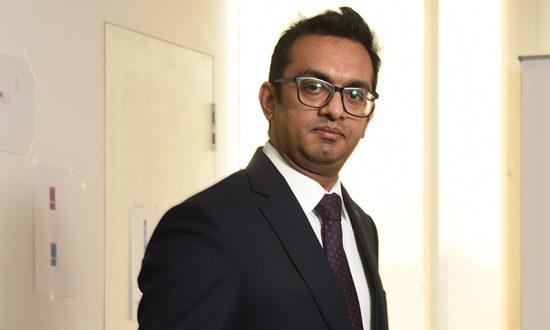Padmakumar Nair is the co-founder and CEO of Ennoventure. An alumnus of the MIT Sloan School of Management, he brings with him over 18 years of leadership experience across the globe in devising strategies that bring companies to success. He has managed multi-disciplinary, cross-functional and geographically diverse teams to optimise business value by following a motivational style of leadership and encouraging open communication.
Consumers today have more choice at their disposal than ever before – the dark side of this, however, is that counterfeit goods are also moving more swiftly. Both governments and companies are working to curb counterfeit sales and penalise offences more strictly, but counterfeiters are also becoming advanced. In this context, investing in new-age anti-counterfeit solutions helps to negate the possibility of counterfeiting in the first place, saving companies time and money and safeguarding customers. We can examine this further as follows.
The counterfeit industry today
Counterfeiting is rampant across industries everywhere, from automobiles and textiles to food products and medicines. At its least harmful, counterfeit goods are cheap and can break or spoil easily. At its most harmful, counterfeit medicines or food can affect consumers’ health, sometimes critically. Medicines, in particular, witness a lot of counterfeiting born out of high market prices and insufficient regulations. During the pandemic, for instance, the distribution of counterfeit drugs went up by an alarming amount, including fake vials of the drug Remdesivir that threatened the lives of many Covid-19 patients and put the genuine manufacturers under fire.
Counterfeiting also has other consequences. Knock-off goods often infiltrate the market to the extent of outing the genuine manufacturers, which leads to loss in profit that could force them to lay employees off or even shut shop. Customers may also refuse to buy from a brand after encountering fake versions of its products, leading to further economic losses. The burden of counterfeiting on the public infrastructure is also considerable, as more police resources go into tracking counterfeiters down and more healthcare resources go towards serving people adversely affected by fake consumables. And the more counterfeiting there is, the less investors will be willing to put their money into local businesses, and the more the economy will suffer.
Technology in the packaging industry
Most product packaging nowadays includes some kind of overt or covert technology such as holograms, barcodes or radio frequency identification (RFID) devices to combat counterfeiting. Among the most common are custom holograms, designed uniquely for each company. With the right tools, however, counterfeiters can copy those holograms identically. Companies are then forced to introduce a new hologram, which means new packaging and a recalling of old stocks – all of which is expensive. Even QR codes are not foolproof, as they can be easily copied by counterfeiters with the right equipment.
Emergence of anti-counterfeit solutions
Modern anti-counterfeit solutions are based on two pillars – foolproof security, and minimal hassle. With invisible cryptographic signatures, companies need no longer spend time and money on changing their production process or their package design. The signatures are embedded throughout the package, as opposed to hologram stickers that can fall off, and their being invisible makes them impossible to copy. Customers can scan the product package using their phones to authenticate. These scans also support geotagging for easy tracking throughout the shipping process, so any suspicious activity can be caught at once.
The role of branding
A big part of tackling counterfeit goods is awareness about what authentic goods look like, which is where having a digital presence makes a big difference. When a brand promotes itself online and regularly shares information about its products, designs and packaging, customers know enough to not be fooled by fakes. Investing in good SEO and having active social media profiles will also allow brands to maintain an authentic presence and catch out any fake accounts. Signing up with an online marketplace or a web platform provider is also a good idea, as these platforms provide exposure to a larger audience and take prompt action of their own against vendors of fake goods.
The road ahead
Ultimately, the best way to combat counterfeiting is by making it impossible to happen in the first place, and in empowering manufacturers and customers to spot and call out counterfeit goods the moment they see them. Brands can protect themselves and their customers by having a strong authentic presence online and by investing in encrypted anti-counterfeit package signatures that can’t be copied and can be tracked at every stage. This, combined with more stringent anti-counterfeit laws, will protect consumers against harmful fakes and also strengthen the economy.


